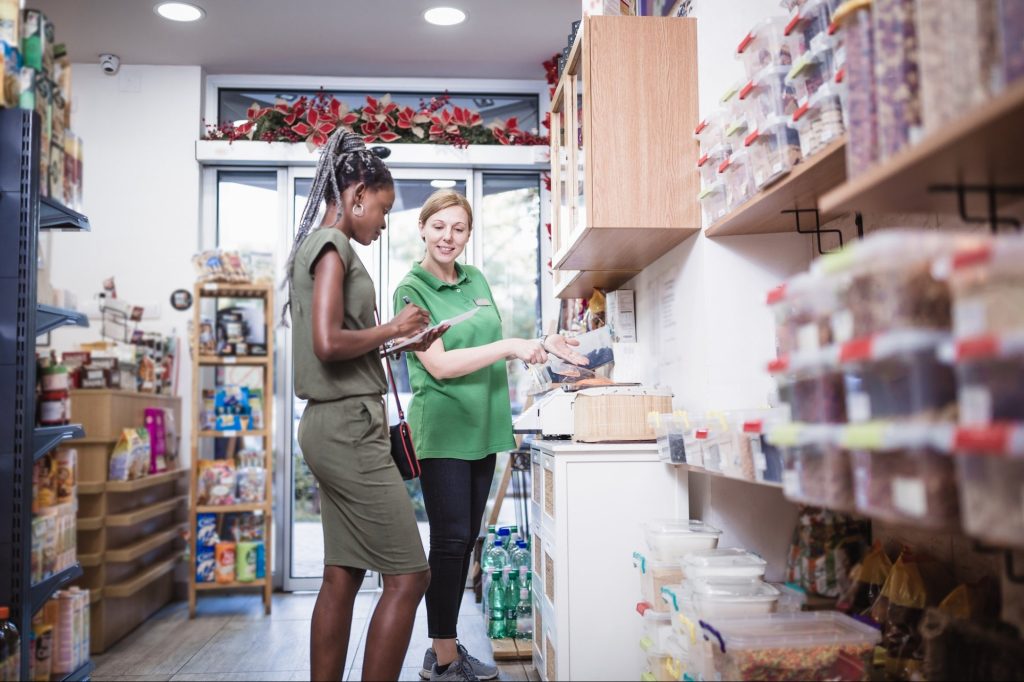As a small retail shop owner, you have big ambitions but, perhaps, a tight budget. You want to attract more customers but not blow all your means on expensive ads or social media marketing. What are some strategies to implement now and attract more customers?
From the in-store experience to upping your digital “curb appeal,” here are some simple yet effective ways to market your retail store.
Related: 4 Strategies to Help You Attract More Local Customers to Your Small Business
1. Curate the in-store experience
An eye-catching storefront and thoughtful merchandising work wonders to not only draw in passersby but also increase sales. Carefully curating the in-store experience — from product displays to the checkout process to your customer service team — is essential for effective retail marketing.
The overall atmosphere of your store is important. Consider the colors, furniture, lighting, music and even scent. A pleasant ambiance makes the shopping experience more enjoyable and encourages customers to browse your store.
Make it easy for customers to find what they are looking for, with an intuitive layout and intentional product displays. Design your displays to highlight your best products, seasonal items or current promotions. Pair related products together (in proximity) to encourage customers to purchase complementary items. For example, place sunglasses near summer clothing or athletic equipment near sportswear.
Train staff to provide a positive, consistent customer service experience. For example, all staff should welcome guests as they enter the store and provide personalized recommendations based on the products customers are interested in.
2. Make it Meta (organic and ads)
With more than three billion monthly active users, Meta (formerly Facebook) is the biggest social media platform around. Meta is particularly effective when it comes to marketing a small retail business, whether through organic content or paid advertising.
First, create and optimize your Facebook business page to effectively describe your business, reflect your visual branding, share business updates, promote products and engage with customers. Your Facebook posts should have a consistent aesthetic and tone of voice so that when people visit your profile, they get a positive and clear impression of your business.
Meta also offers powerful ad-targeting tools to reach specific demographics based on location, interests and shopping behavior. You can run Meta ads on Facebook and Instagram to promote your store, online products, special offers or events.
Meta is also a great platform for sharing user-generated content. Encourage your customers to share photos of their purchases and tag your store. This type of content serves as impactful social proof and testimonials for your products.
Related: How to Make Money With Facebook Ads
3. Run pin-worthy product promos
If you sell products online through your website, then Pinterest is the place for promotion. With over 500 million active users, Pinterest is an extensive online marketplace that allows people to discover new products and brands.
Pinterest — like Google, Bing or YouTube — works as a search engine. People search for how-to guides, products, video content, etc., and the algorithm generates their feed to match. By creating content “pins” related to what people are searching for, you can get your products to rank high in Pinterest search.
The types of content that tend to perform best on Pinterest are product showcases with high-quality images, step-by-step tutorials featuring your products, seasonal inspiration boards and customer testimonials or reviews.
Experiment with different topics and content formats to see what your customers enjoy most. Use tools like Tailwind to automatically circulate your Pins, improving visibility and traffic.
4. Up your digital curb appeal with SEO
You don’t need to depend on casual foot traffic to keep your store busy. Search Engine Optimization (SEO) works to attract local customers searching online. Through geo-specific targeting, you can drive more customers to your physical storefront.
Use an SEO keyword tool like Semrush to identify searchable key terms related to your product, niche and/or location. For instance, if you run a women’s boutique clothing store in Brooklyn, some key terms to target might include “women’s clothing store brooklyn” (50 searches per month) and “brooklyn dress shop” (70 searches per month).
You’ll then incorporate these key terms into the content on your website, whether on your main pages (home, about, contact, etc.), product pages or blog posts. Ensure that the content effectively describes the key term you wish to target on each page, respectively.
Implement on-page SEO best practices, like writing concise page titles, descriptions and page headings, to improve the “searchability” of your website. Identify question-based keywords, like “how to dress for an interview” to target longer, more descriptive blog post content.
Create a Google Business Profile that includes your hours, location, phone number and website link. Add eye-catching photos of your storefront, products and staff, and request that happy customers leave reviews on your profile. This will work to build trust and attract more local customers.
Related: 8 Best Free and Low-Cost SEO Tools for Small Businesses
In summary, marketing a small retail business involves a creative, multichannel approach. In-store merchandising, Meta organic content and ads, Pinterest and SEO strategies can all be used to drive more online sales and local customers. From curating eye-catching displays and personalized customer service to creating content for Meta and Pinterest, these strategies come together to form a cohesive marketing plan that maximizes both in-store and online opportunities.
Read the full article here









